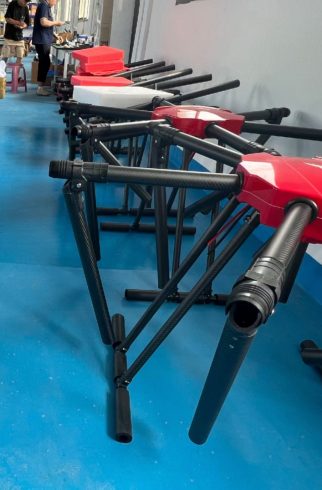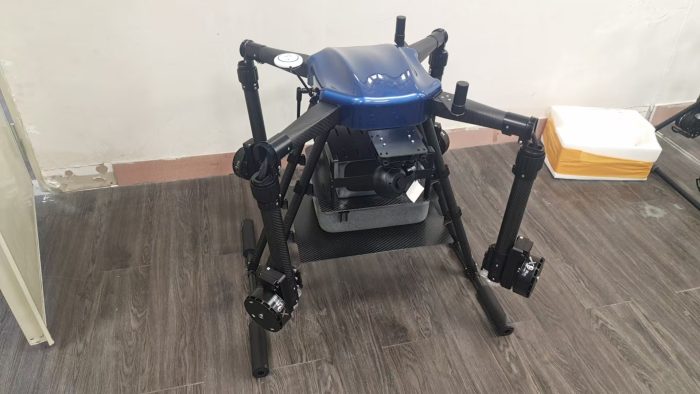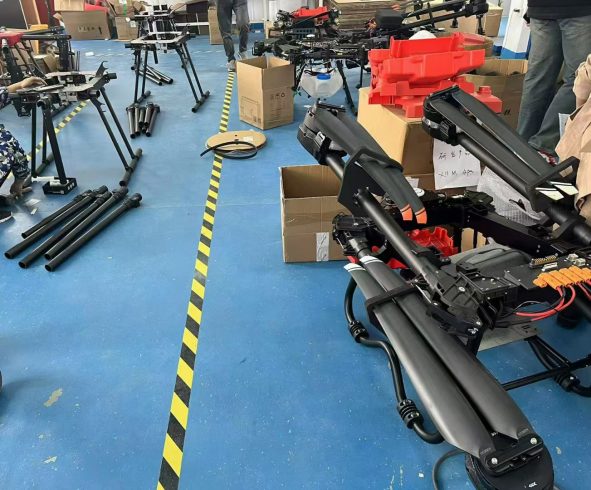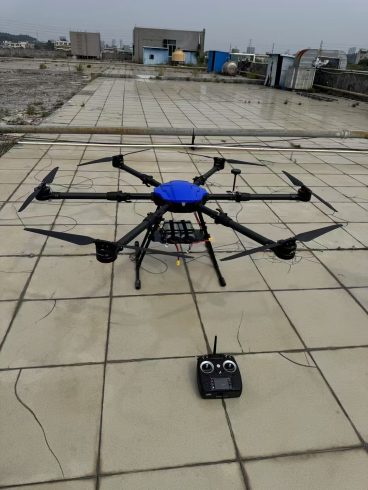![图片[1]-Spraying Drones for Banana Plantations: Elevating Efficiency and Sustainability-msoen](https://www.msoen.com/wp-content/uploads/2025/04/0f937885e9184642-1024x849.jpg)
Banana plantations, characterized by their towering plants, dense foliage, and susceptibility to pests and diseases, present unique challenges for traditional farming methods. Manual and tractor-based spraying often struggles with uneven coverage, labor costs, and environmental risks. Enter agricultural drones—innovative tools that soar above these challenges, delivering precision, efficiency, and eco-friendly solutions. This article explores how spraying drones are transforming banana farming, ensuring healthier crops, reduced costs, and sustainable practices.
Challenges in Banana Plantation Management
Banana farming faces several hurdles that drone sprayers are uniquely equipped to address:
- Dense Canopy Structure: Thick layers of broad leaves block spray penetration, leaving lower stems and soil underprotected.
- Pest and Disease Pressure: Black Sigatoka, Panama disease, and banana weevils require frequent, targeted chemical interventions.
- Labor Intensity: Manual spraying in humid, tropical conditions risks worker health and increases operational costs.
- Soil Compaction: Heavy machinery damages shallow banana roots, reducing yields and plant longevity.
- Environmental Impact: Overuse of chemicals contaminates soil and water, harming ecosystems.
How Drone Sprayers Optimize Banana Farming
- Precision Canopy Penetration
- Adjustable Nozzles: Drones emit droplets in sizes ranging from 50 microns (fine mist) to 300 microns (coarse spray), ensuring chemicals penetrate dense upper leaves and reach lower stems.
- Multi-Directional Spraying: Angled nozzles target the underside of leaves where pests like aphids and fungi thrive.
- AI-Powered Disease Detection
- Multispectral Imaging: Cameras detect early signs of Black Sigatoka (leaf streaks) or Fusarium wilt (yellowing) by analyzing chlorophyll levels and thermal patterns.
- Machine Learning Models: Trained on thousands of banana plant images, AI identifies infestation hotspots and triggers localized sprays, reducing chemical use by 40–60%.
- Terrain Adaptability
- Slope Navigation: Drones easily access plantations on hillsides or uneven terrain, common in tropical regions like Ecuador or the Philippines.
- Low-Altitude Flight: Maintains a consistent 2–4 meter height above plants to avoid drift and ensure uniform coverage.
- Eco-Friendly Practices
- Reduced Chemical Load: Targeted applications minimize fungicides and nematicides, preserving soil microbiota.
- Organic Compatibility: Drones efficiently apply biocontrol agents (e.g., Beauveria bassiana for weevil control) or organic fungicides.
- Zero Soil Compaction: Lightweight drones protect delicate root systems, improving water absorption and nutrient uptake.
Technologies Tailored for Banana Plantations
- 3D LiDAR Mapping
- Creates detailed models of plantation layouts, identifying gaps in canopy coverage or areas needing replanting.
- Optimizes flight paths to avoid overlapping sprays and reduce chemical waste.
- IoT Integration
- Soil moisture sensors and weather stations sync with drones to schedule sprays during optimal humidity levels, enhancing chemical absorption.
- Swarm Spraying
- Fleets of drones collaborate to treat large plantations (>100 acres) simultaneously, guided by centralized AI to prevent gaps or overlaps.
- Night Operations
- Equipped with thermal cameras, drones spray during cooler hours to minimize evaporation and improve efficacy of contact-based pesticides.
Case Study: A Drone-Driven Success in Costa Rica
A 200-acre banana plantation in Costa Rica adopted drone spraying to combat Black Sigatoka and reduce labor costs. Results after one year:
- 50% Fewer Fungicide Applications: AI-targeted spraying reduced treatments from 20 to 10 cycles annually.
- 30% Labor Cost Savings: Replaced 15 manual sprayers with two drone operators.
- 20% Yield Increase: Healthier roots and reduced chemical stress improved fruit size and quality.
- Sustainability Certification: Achieved Rainforest Alliance status, securing premium export contracts.
Overcoming Adoption Barriers
- High Initial Costs
- Challenge: Advanced drones with AI and LiDAR cost $15,000–$40,000.
- Solution: Government subsidies, leasing programs, or cooperative ownership among smallholder farmers.
- Regulatory Compliance
- Challenge: Aviation laws in countries like Colombia or India restrict drone operations near airports or protected zones.
- Solution: Partner with local agricultural agencies to streamline permits and pilot training.
- Technical Training
- Challenge: Farmers need skills to interpret drone data and maintain equipment.
- Solution: Mobile apps with multilingual tutorials and augmented reality (AR) guides for troubleshooting.
Future Trends in Banana Plantation Drones
- Automatic Refill Stations: Drones dock at solar-powered stations for battery swaps and chemical refills, enabling 24/7 operations.
- Gene-Editing Integration: Drones collect leaf samples to screen for disease-resistant traits, guiding breeding programs.
- Biodegradable Spray Capsules: Time-release microcapsules activated by pest enzymes, reducing chemical volume by 90%.
- Carbon Credit Farming: Drones track emission reductions from precision practices, generating revenue via carbon markets.
Implementing Drones in Your Plantation
- Assess Needs: Choose drones with 10–20L tanks and wind resistance >10 m/s for tropical climates.
- Start Small: Pilot on 10–20 acres to gauge ROI before scaling.
- Monitor Results: Use drone-collected data to refine spray schedules, chemical mixes, and flight paths.
Conclusion
Spraying drones are revolutionizing banana farming, turning challenges like dense canopies and relentless pests into opportunities for precision and sustainability. By slashing chemical use, protecting soil health, and boosting yields, this technology empowers farmers to meet global demand while honoring ecological boundaries. As AI, automation, and green chemistry advance, drones will further cement their role as indispensable allies in the quest for resilient, high-value banana production.
For growers willing to embrace innovation, the future of banana farming is not just airborne—it’s efficient, sustainable, and ripe with potential.












暂无评论内容